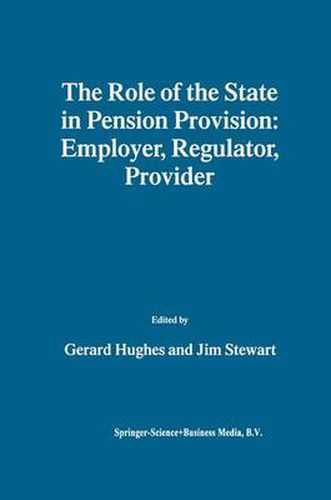Readings Newsletter
Become a Readings Member to make your shopping experience even easier.
Sign in or sign up for free!
You’re not far away from qualifying for FREE standard shipping within Australia
You’ve qualified for FREE standard shipping within Australia
The cart is loading…






This title is printed to order. This book may have been self-published. If so, we cannot guarantee the quality of the content. In the main most books will have gone through the editing process however some may not. We therefore suggest that you be aware of this before ordering this book. If in doubt check either the author or publisher’s details as we are unable to accept any returns unless they are faulty. Please contact us if you have any questions.
This text deals with the role of the state in pension provision as an employer, regulator and provider. Part one deals with problems and reforms of public sector pension systems in OECD countries. The countries covered are Denmark, Finland, Germany, Netherlands, Norway, and the USA. Part two considers the regulation of occupational pension schemes in the Netherlands and the United Kingdom, and whether there is still a role for the state in providing earnings-related pensions in the United Kingdom. Part three presents demographic projections for the next half-century, using Ireland as an example, looks at some of the options which have been used in Finland, and proposed in the United States, to cope with population ageing, and examines issues of intergenerational equity which are posed by these options. All the chapters deal with recent reforms. The chapters are written by acknowledged experts in their field who are independent of both the pensions industry and government. Hence the chapters provide a critical account of developments in relation to the reform of occupational pension schemes in the public sector and of the debate about the state’s role as a regulator of private pension schemes and a provider of pensions based on the social insurance principal. The book provides a source of information about pension schemes in OECD countries. It shows that there is not a unique model of occupational pension provision for public sector employees and that the pension benefits which are provided in different countries are quite variable. It also shows that public sector occupational pension systems have changed and are in the process of considerable further change in a number of OECD countries.
$9.00 standard shipping within Australia
FREE standard shipping within Australia for orders over $100.00
Express & International shipping calculated at checkout
This title is printed to order. This book may have been self-published. If so, we cannot guarantee the quality of the content. In the main most books will have gone through the editing process however some may not. We therefore suggest that you be aware of this before ordering this book. If in doubt check either the author or publisher’s details as we are unable to accept any returns unless they are faulty. Please contact us if you have any questions.
This text deals with the role of the state in pension provision as an employer, regulator and provider. Part one deals with problems and reforms of public sector pension systems in OECD countries. The countries covered are Denmark, Finland, Germany, Netherlands, Norway, and the USA. Part two considers the regulation of occupational pension schemes in the Netherlands and the United Kingdom, and whether there is still a role for the state in providing earnings-related pensions in the United Kingdom. Part three presents demographic projections for the next half-century, using Ireland as an example, looks at some of the options which have been used in Finland, and proposed in the United States, to cope with population ageing, and examines issues of intergenerational equity which are posed by these options. All the chapters deal with recent reforms. The chapters are written by acknowledged experts in their field who are independent of both the pensions industry and government. Hence the chapters provide a critical account of developments in relation to the reform of occupational pension schemes in the public sector and of the debate about the state’s role as a regulator of private pension schemes and a provider of pensions based on the social insurance principal. The book provides a source of information about pension schemes in OECD countries. It shows that there is not a unique model of occupational pension provision for public sector employees and that the pension benefits which are provided in different countries are quite variable. It also shows that public sector occupational pension systems have changed and are in the process of considerable further change in a number of OECD countries.